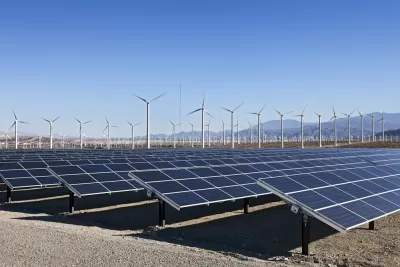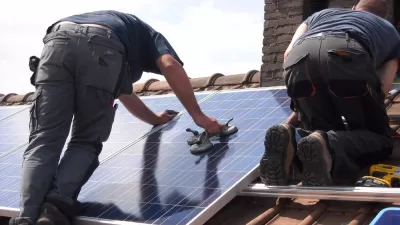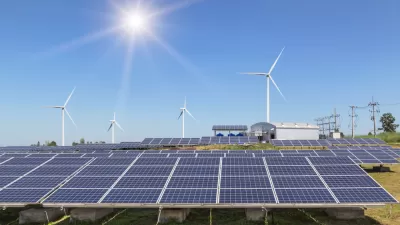To stave off rolling blackouts during a record heat wave, California relied on dramatic conservation by households and a growing renewable energy sector.

Renewable energy commitments aren’t to blame for the strain on California’s power grid, writes Jonathan Thompson in a piece for High Country News. Rather, the warming climate—caused by burning fossil fuels—is the real culprit, and shifting to renewables is one of the only ways to fight it.
On September 6, California utilities urged households to conserve energy to avoid rolling blackouts, even as temperatures across the state hit record highs. “Still, for most of that afternoon, all went smoothly on the California grid because solar and wind output was so high, offsetting about 30% of the total demand.”
In fact, Thompson writes, thanks in large part to a dramatic reduction in demand by California residents that day, “There were no statewide rolling outages, the grid stood up to extreme weather, and fossil fuel advocates’ attempt to politically weaponize the predicted blackouts fell flat.”
Thompson lists some key points to remember, “especially when you hear rhetoric about this near-miss being the result of green energy policies.” For example, California’s growing battery storage capacity and the more widespread adoption of electric vehicles, which can put power back into the grid, will enhance the stability of the state’s power supply. Ultimately, Thompson notes, the success of the state’s efforts to keep the lights on on September 6 hinged on the willingness of individual Californians to conserve during a crucial time.
FULL STORY: The Green New Deal didn’t crash California’s grid

Alabama: Trump Terminates Settlements for Black Communities Harmed By Raw Sewage
Trump deemed the landmark civil rights agreement “illegal DEI and environmental justice policy.”

Study: Maui’s Plan to Convert Vacation Rentals to Long-Term Housing Could Cause Nearly $1 Billion Economic Loss
The plan would reduce visitor accommodation by 25% resulting in 1,900 jobs lost.

Planetizen Federal Action Tracker
A weekly monitor of how Trump’s orders and actions are impacting planners and planning in America.

This Toronto Suburb Has More Bus Riders Than Columbus, Ohio
Brampton, Ontario used gradual improvements in service to prove that if you build it, they will ride.

Paris Bike Boom Leads to Steep Drop in Air Pollution
The French city’s air quality has improved dramatically in the past 20 years, coinciding with a growth in cycling.

Why Housing Costs More to Build in California Than in Texas
Hard costs like labor and materials combined with ‘soft’ costs such as permitting make building in the San Francisco Bay Area almost three times as costly as in Texas cities.
Urban Design for Planners 1: Software Tools
This six-course series explores essential urban design concepts using open source software and equips planners with the tools they need to participate fully in the urban design process.
Planning for Universal Design
Learn the tools for implementing Universal Design in planning regulations.
Smith Gee Studio
Alamo Area Metropolitan Planning Organization
City of Santa Clarita
Institute for Housing and Urban Development Studies (IHS)
City of Grandview
Harvard GSD Executive Education
Toledo-Lucas County Plan Commissions
Salt Lake City
NYU Wagner Graduate School of Public Service





























